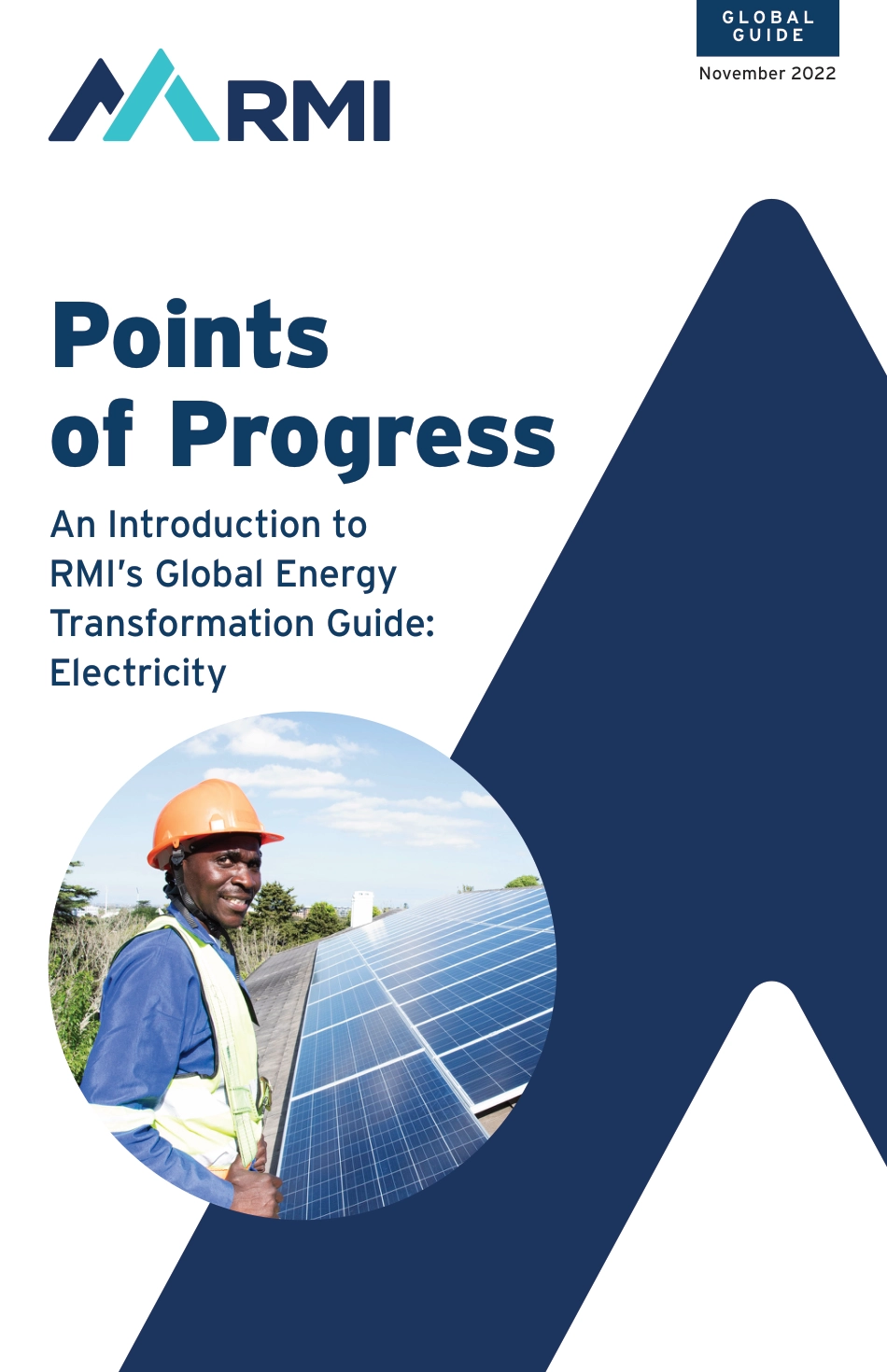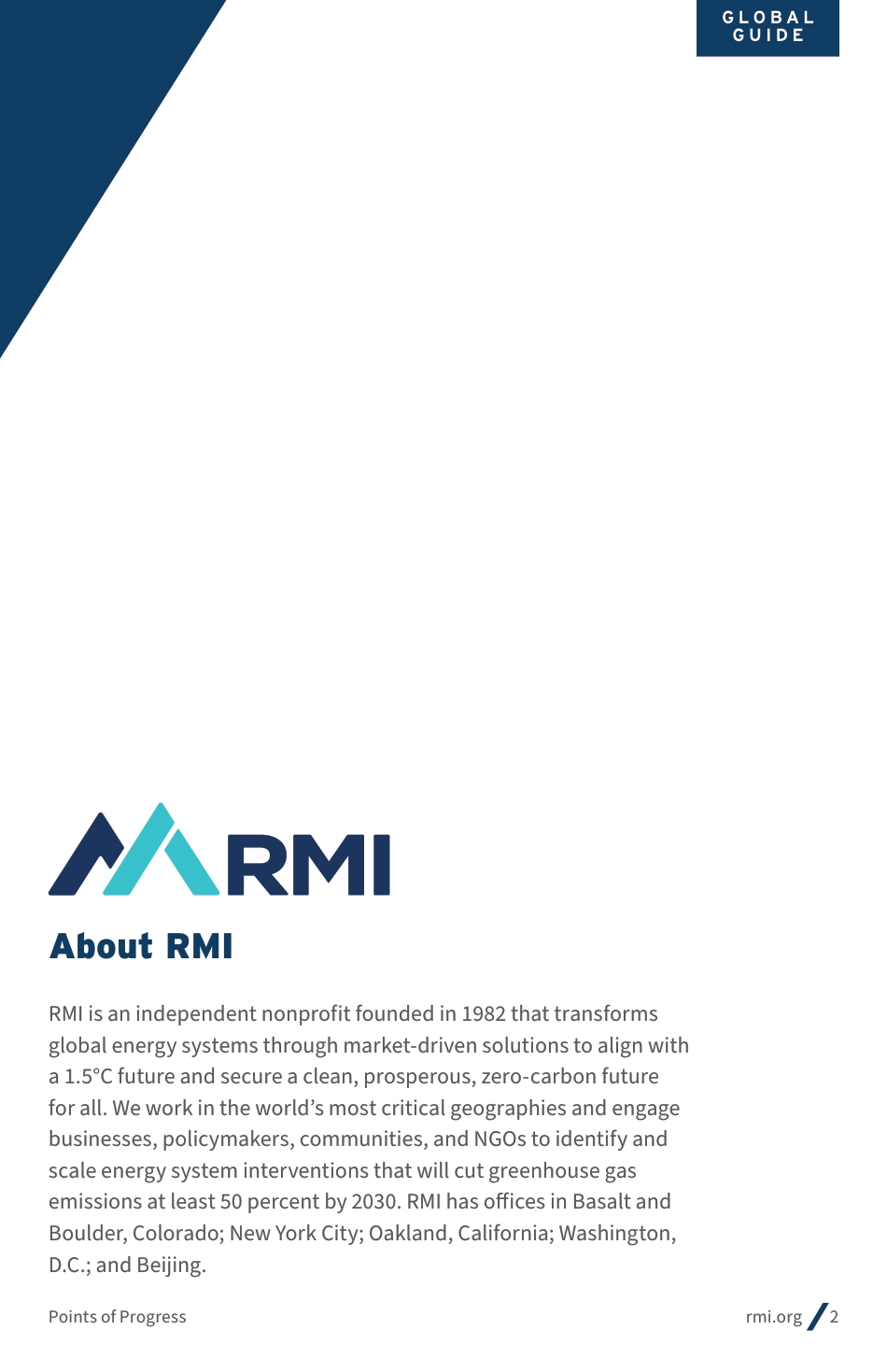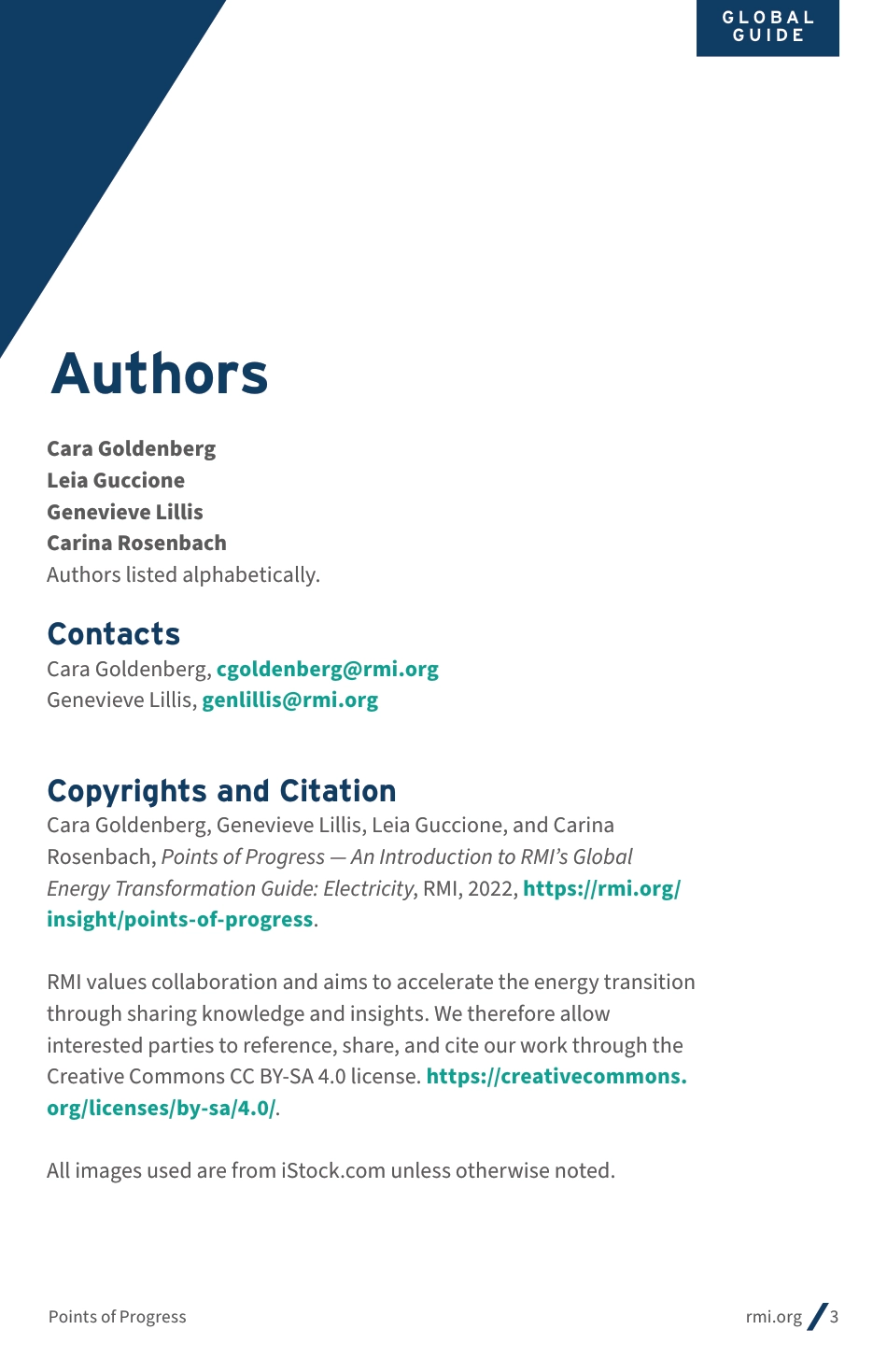Points of ProgressAn Introduction to RMI’s Global Energy Transformation Guide: Electricity November 2022G L O B A L G U I D Ermi.org / 2Points of ProgressAbout RMIRMI is an independent nonprofit founded in 1982 that transforms global energy systems through market-driven solutions to align with a 1.5°C future and secure a clean, prosperous, zero-carbon future for all. We work in the world’s most critical geographies and engage businesses, policymakers, communities, and NGOs to identify and scale energy system interventions that will cut greenhouse gas emissions at least 50 percent by 2030. RMI has offices in Basalt and Boulder, Colorado; New York City; Oakland, California; Washington, D.C.; and Beijing.G L O B A L G U I D Ermi.org / 3Points of ProgressCara GoldenbergLeia GuccioneGenevieve LillisCarina RosenbachAuthors listed alphabetically.ContactsCara Goldenberg, cgoldenberg@rmi.orgGenevieve Lillis, genlillis@rmi.orgCopyrights and Citation Cara Goldenberg, Genevieve Lillis, Leia Guccione, and Carina Rosenbach, Points of Progress — An Introduction to RMI’s Global Energy Transformation Guide: Electricity, RMI, 2022, https://rmi.org/insight/points-of-progress. RMI values collaboration and aims to accelerate the energy transition through sharing knowledge and insights. We therefore allow interested parties to reference, share, and cite our work through the Creative Commons CC BY-SA 4.0 license. https://creativecommons.org/licenses/by-sa/4.0/. All images used are from iStock.com unless otherwise noted.AuthorsG L O B A L G U I D Ermi.org / 4Points of ProgressThe authors thank the following individuals from RMI for their helpful insights and/or feedback on this report. All errors remain our own.Kaitlyn BunkerMark DysonRachel Go...



